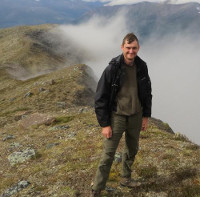
Fossil Focus: Hallucigenia and the evolution of animal body plans
by Martin Smith*1
Introduction:
Five hundred and fifty million years ago, few (if any) organisms on Earth were much more complex than seaweed. But this would not be the case for long: during a profound evolutionary event dubbed the Cambrian Explosion, natural selection generated the raw material of all the body plans we see in the oceans today. Fossil sites from midway through the Cambrian period (541 million to 485 million years ago) preserve organisms that could almost be mistaken for modern eels, jellyfish, shrimp and squid, along with members of most other major animal groupings (phyla) recognized by biologists today.
But the exceptional fossil deposits of the Cambrian period, some of which preserve fleshy bodies as well as the skeletons and bones that make up a typical fossil, al...
